- |<
- <
- 1
- >
- >|
-
車田 亮, 伊藤 吾朗, 望月 健吾2017 年67 巻1 号 p. 2-7
発行日: 2017/01/30
公開日: 2017/02/28
ジャーナル フリーHydrogen storage containers in hydrogen stations for fuel-cell vehicles undergo cyclic pressure change. Therefore, pressure cycle tests must be conducted up to 106 cycles at maximum. Reports have presented different cycles to failure, because different liquid pressure media have been used and temperature rise during the tests has taken place without control. In this study, a tensile fatigue test of a 6061 aluminum alloy with T6-tempered is carried out, which is an actual liner material for hydrogen storage containers. Fatigue tests are carried out under stress cycles in sine wave of 1 Hz with stress ratio, R, of 0.1 under the environments of tap water, de-ionized water and 50% ethylene glycol aqua solution at 25 and 75°C. The original surface adjacent to the fracture point as well as the fracture surface is observed in detail with SEM. Results elucidated the effects of the test temperature and environment on the fatigue behavior of the alloy. The number of cycles to failure increased with decreasing test temperature and decreasing stress amplitude. Moreover, the 50% ethylene glycol aqua solution was associated with more cycle to failure than de-ionized water and tap water. On the original surface of the specimens tested in de-ionized water and tap water, corrosion associated with an Al–Fe–Si secondary phase particle was observed at the crack initiation point, while no such corrosion was observed on the specimen tested in the ethylene glycol aqua solution. We therefore inferred that corrosion enhanced crack initiation in de-ionized or tap water. The ethylene glycol aqua solution with a concentration not less than 50% was considered to be desirable in the pressure cycle test of high-pressure hydrogen storage containers because of no influence of corrosion, and it was necessary to carry out a temperature control to avoid temperature rising.
抄録全体を表示PDF形式でダウンロード (1467K) -
糸井 貴臣, 井上 祥一, 岡川 啓悟2017 年67 巻1 号 p. 8-15
発行日: 2017/01/30
公開日: 2017/02/28
ジャーナル フリーLap joint sheets of 2017-T3/2017-T3 and 2024-T3/2024-T3 were fabricated by magnetic pulse welding (MPW). Tensile shear tests were performed on the welded sheet, and a good lap joint was achieved at a discharge energy more than 3.0 kJ for both lap joint sheets. Weld interface showed wavy morphology when the bonding at an adequate amount of discharge energy. Weld width of the lap joint sheets tend to increase with increasing of discharge energy. Collision speed calculated from collision time was 211 m/s and estimated 1.5 GPa of the collision pressure at discharge energy of 3.5 kJ. SEM and EDS results showed that the weld interface exhibited no significant contrast of intermediate layer and oxides. A Metal jet was observed as aggregates of fine particles with size of less than 100 nm at the outside of bonded area. From TEM observation at the bonding interface, Al phases between flyer and parent sheets had direct contact without the intervention of the oxide, and localized melting was not recognized. From these obtained results, good lap joint is attributed to true-contact of Al phases, an increasing of weld width, the anchor effect, and work hardening at weld interface.
抄録全体を表示PDF形式でダウンロード (1859K)
-
一般社団法人日本アルミニウム協会 耐食性評価試験委員会2017 年67 巻1 号 p. 16-19
発行日: 2017/01/30
公開日: 2017/02/28
ジャーナル フリーPDF形式でダウンロード (433K)
-
梅田 秀俊2017 年67 巻1 号 p. 21-25
発行日: 2017/01/30
公開日: 2017/04/30
ジャーナル フリーPDF形式でダウンロード (871K)
- |<
- <
- 1
- >
- >|